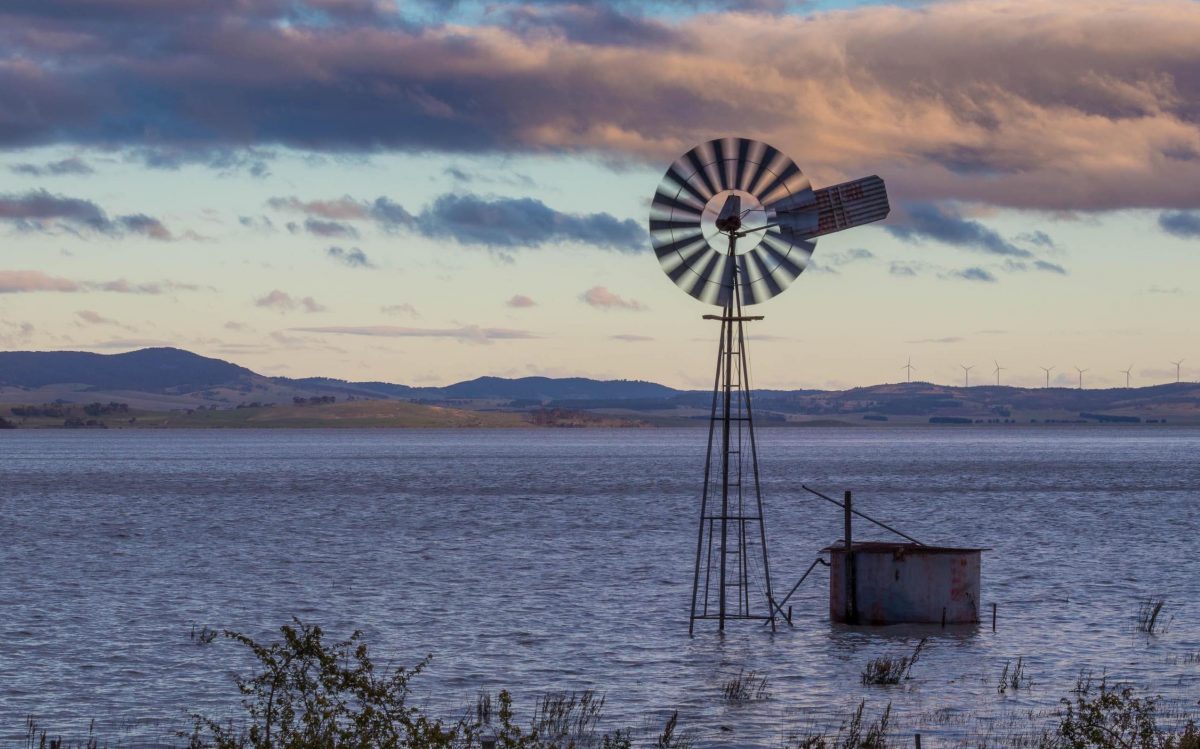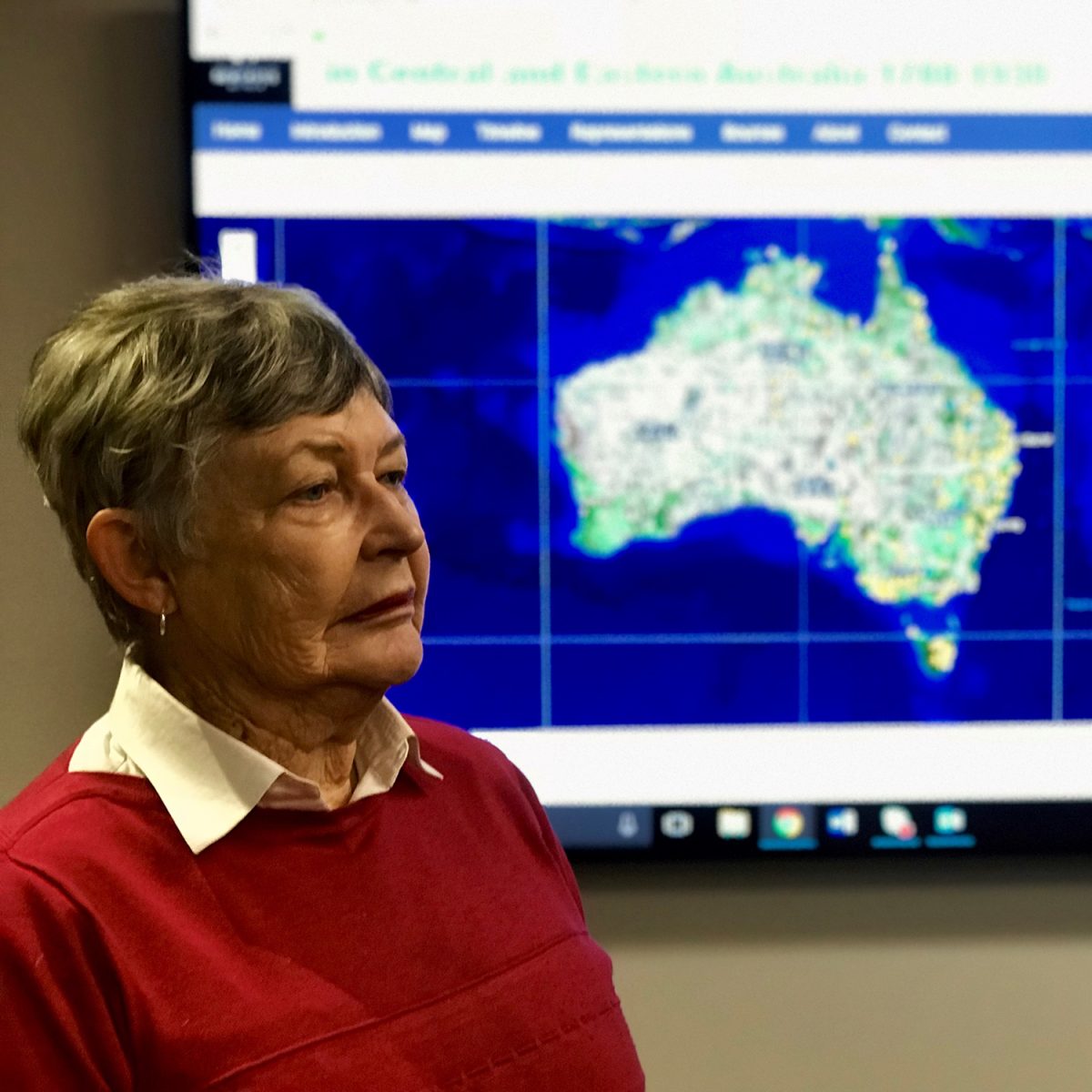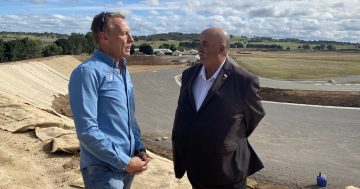
“Black people have always had an eerie feeling driving around that way. It makes sense given all the phenomena that happen there, like the water disappearing and coming back,” says Ngunnawal leader Selina Walker. Photo: David Coleman.
CONTENT WARNING: Aboriginal and Torres Strait Islander readers are advised that this story may cause distress.
In the Ngunnawal language, Lake George is named Weereewa, meaning ‘bad water’.
Scientists ascribe the meaning to its high salt content. But for Leader Selina Walker, it’s due to the massacre she believes her people suffered there around 200 years ago.
While Western civilisation has much of its history noted down with pen and ink, most Indigenous cultures remember their past through stories told by their Elders. According to a story passed down through Elder Walker’s grandmother to her family and the Ngunnawal community, a group of Ngunnawal were shot on the gorge lining Lake George and were then rolled down the hill into the lake.
Leader Walker was told by her family that there were two other massacre sites, one in Ginninderry, and the other along Sullivan’s Creek on the Australian National University (ANU) campus.
Since 2017, Professor Lyndall Ryan and her team at the University of Newcastle have documented and mapped 430 massacre sites. Their work is dedicated to providing the first Australia-wide record of colonial frontier massacres between 1788 and 1930.
Professor Ryan believes the Lake George massacre is likely to have happened in the early 1820s or 1840s, as horses weren’t widely available prior to then. She says the mounted police of Goulburn could have been the perpetrators on their patrols down south towards Queanbeyan.
“Most massacre sites are near fresh water where Aboriginal campsites usually are. Although the water would have been higher in Lake George back then, it is unusual for the bodies to be rolled into the water.
“It’s more common for them to have been burnt by the settlers. Some Indigenous people’s death rituals involve burning the body to release their spirit, but it’s negated by someone outside their people doing it.
“The story might have been changed by the Ngunnawal to cope with the idea of that happening.”
While her team has not logged any massacres within the ACT or surrounding region, she has been told of a site along the Queanbeyan River.
“Our map is indicative not definitive. It doesn’t mean nothing happened, we just haven’t found enough evidence to confirm it.”

Professor Ryan began documenting massacre sites in 2010, when they began to digitise old newspapers left in the archives. Photo: University of Newcastle.
Leader Walker says the lack of evidence is due to a variety of reasons.
“White people told them not to talk about it, and there was a lot of brainwashing going on. Especially amongst the kids that were stolen and forced to go to school, who were told that nothing happened in order to cover up a lot of those massacres and horrible things that were done to us.
“They didn’t say when these events exactly took place, because you just got into so much trouble if you spoke about these things, especially in our language. That’s why they don’t talk about it until they’re older.”
Professor Ryan says this is usually how these events are brought to her team’s attention.
“A 200-year gap and then it’s safe to talk, that’s what I’ve found in my career with these stories,” she says.
“It’s a long time to keep these stories alive and very hard to talk about for Indigenous people, especially with all the trauma. Most of the time they just tell me where it happened, but won’t say more.
“Settlers had a code of silence around these incidents because they were illegal. And the descendants of their families may still know but don’t want the shame.”
Apart from the historical societies’ documents and archival evidence of stockmen enacting vengeance for one of their own being killed by an Indigenous person, most of the details could be found in articles between the 1880s and 1890s, when journalists would interview the ‘old hands’ in country towns who’d witnessed or been a part of a massacre in the past.
“In the mid-1820s there was a massacre along the Patterson River in the Hunter, but evidence of it didn’t come out until the 1870s. A Maitland Mercury journalist reported a story about the massacre, told to him by a retired station manager who only felt comfortable sharing because his employer had just died.
“There’s usually no sense of feeling guilty in these stories, but you can tell they need to get it off their chest.”
While these massacres are deeply troubling for members of the Indigenous community, Leader Walker says, “It’s not a sad thing to tell the truth. It allows our people to heal.”










